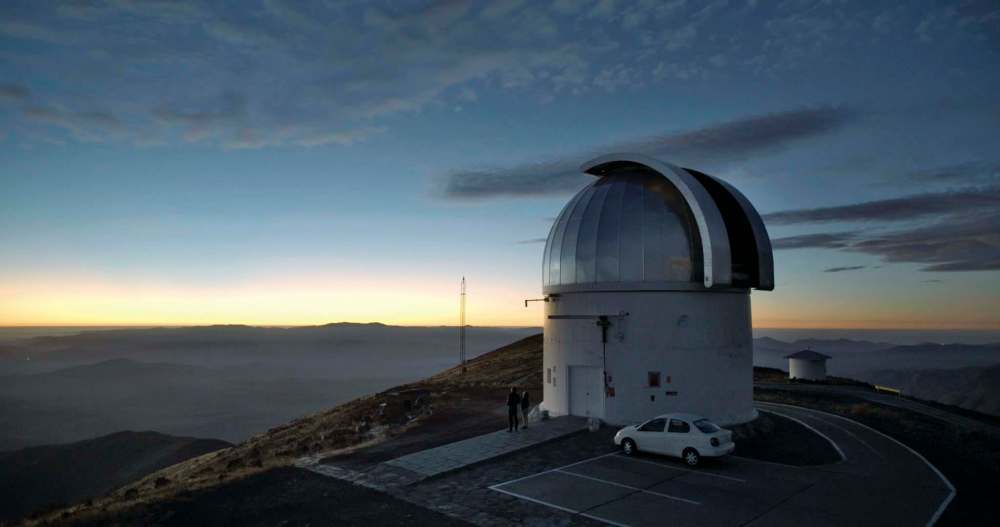Cielo a breath-taking look at the heavens
Slow, meditative documentary explores relationships with stars
Advertisement
Read this article for free:
or
Already have an account? Log in here »
To continue reading, please subscribe:
Monthly Digital Subscription
$0 for the first 4 weeks*
- Enjoy unlimited reading on winnipegfreepress.com
- Read the E-Edition, our digital replica newspaper
- Access News Break, our award-winning app
- Play interactive puzzles
*No charge for 4 weeks then price increases to the regular rate of $19.00 plus GST every four weeks. Offer available to new and qualified returning subscribers only. Cancel any time.
Monthly Digital Subscription
$4.75/week*
- Enjoy unlimited reading on winnipegfreepress.com
- Read the E-Edition, our digital replica newspaper
- Access News Break, our award-winning app
- Play interactive puzzles
*Billed as $19 plus GST every four weeks. Cancel any time.
To continue reading, please subscribe:
Add Free Press access to your Brandon Sun subscription for only an additional
$1 for the first 4 weeks*
*Your next subscription payment will increase by $1.00 and you will be charged $16.99 plus GST for four weeks. After four weeks, your payment will increase to $23.99 plus GST every four weeks.
Read unlimited articles for free today:
or
Already have an account? Log in here »
Hey there, time traveller!
This article was published 25/08/2018 (2632 days ago), so information in it may no longer be current.
OK, I know we are all watching movies on our TVs and our computers. On our phones, for Pete’s sake.
But there are films that plead with us to go to the theatre and sit in the dark and stare at a big screen. Cielo, a visually rapturous look at the night sky, is one of them.
Canadian documentarian Alison McAlpine looks up, way up, but she’s also rooted in the ground, specifically in the profoundly beautiful landscape of the Atacama Desert in northern Chile. With its dry air, high altitude and lack of light pollution, the Atacama is one of the best places on Earth to watch the stars. “How can a human look up and not be amazed?” asks one interview subject.
Slow and meditative, Cielo offers vertiginous time-lapse photography of the rotating Milky Way, as well as special-effects sequences that recreate astronomical events. There is spectacular drone footage of the almost lunar desert plateaus and of massive, ancient petroglyphs. The soundscape is quiet and subtle, sometimes just the noise of cracking bonfires and moving water.
McAlpine also explores the night sky through the eyes of the people who are watching it down here on Earth. She speaks with physicists and astronomers, who are crunching hard data while also reflecting on big spiritual and moral issues. Recognizing the miraculous rarity of our life on this miniscule point within a vast universe ought to change the way we think, according to one scientist. “Shouldn’t we treat each other better?” she asks.
McAlpine talks to a hopeful ufologist, who is searching for evidence of extraterrestrial life in his photos, and introduces an Indigenous elder, who dances and sings and sees in the stars the spirits of those who have gone before him. She also talks with people who live on the land — algae-gatherers, miners, cowboys.
All of these subjects are wrestling, in their own ways, with questions that have occurred across cultures and through millennia, questions that arise from the simple experience of lying on your back and looking up: why are we here? What is our place and purpose? Are we alone?
Thinking so much on the infinite and the eternal, McAlpine sometimes falls into fuzziness.

While Cielo features extraordinary visual images and some fascinating human moments, it lacks the narrative shape of a film like Patricio Guzman’s 2011 documentary Nostalgia for the Light, which connected Atacama astronomers and their search for origins with the buried history of the murderous Pinochet regime.
And McAlpine’s voice-over narrative can be evocative and poetic, but occasionally is intrusive. Sometimes she speaks about the power of silence when actual silence would be better.
alison.gillmor@freepress.mb.ca


Studying at the University of Winnipeg and later Toronto’s York University, Alison Gillmor planned to become an art historian. She ended up catching the journalism bug when she started as visual arts reviewer at the Winnipeg Free Press in 1992.
Our newsroom depends on a growing audience of readers to power our journalism. If you are not a paid reader, please consider becoming a subscriber.
Our newsroom depends on its audience of readers to power our journalism. Thank you for your support.


